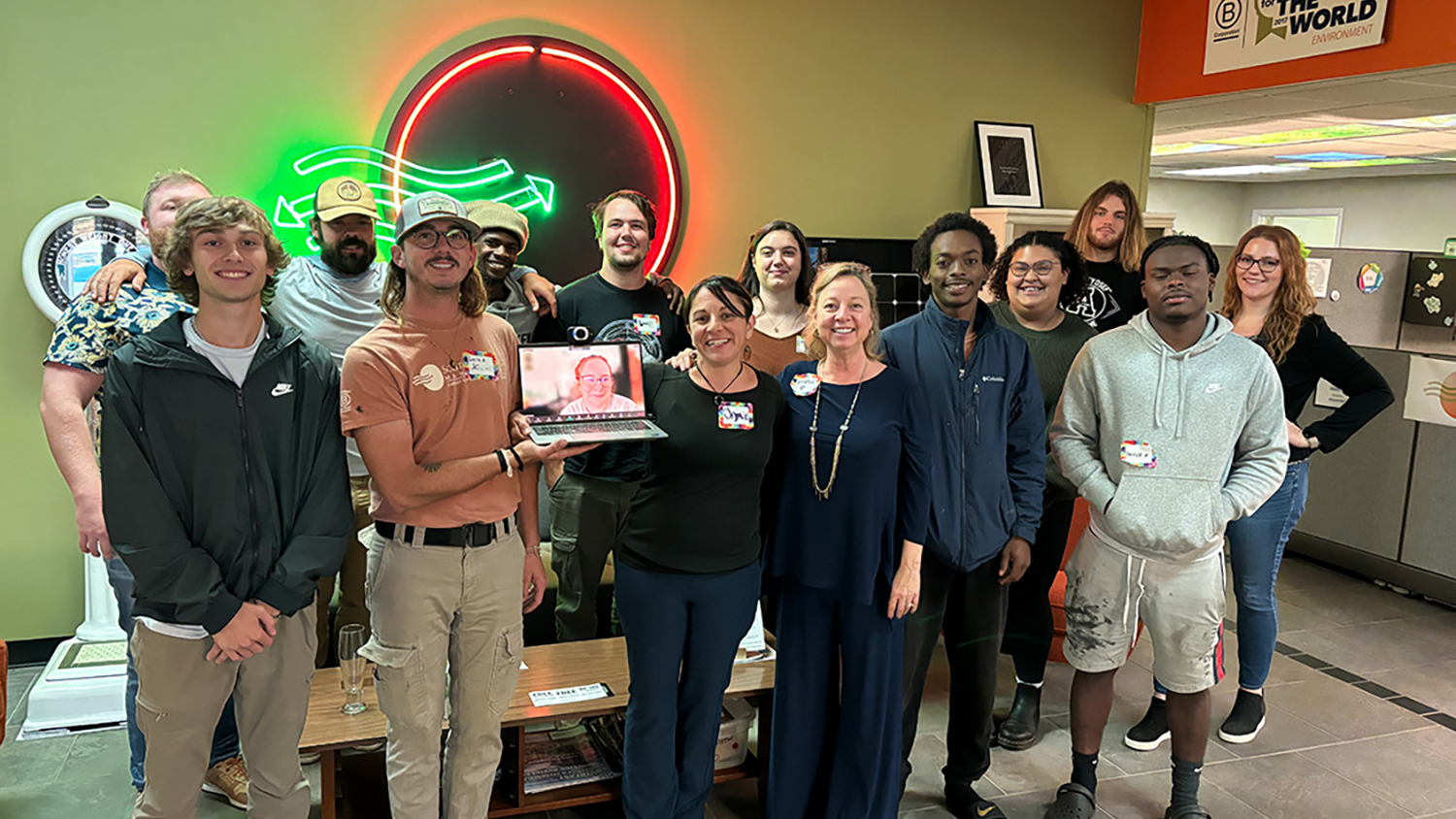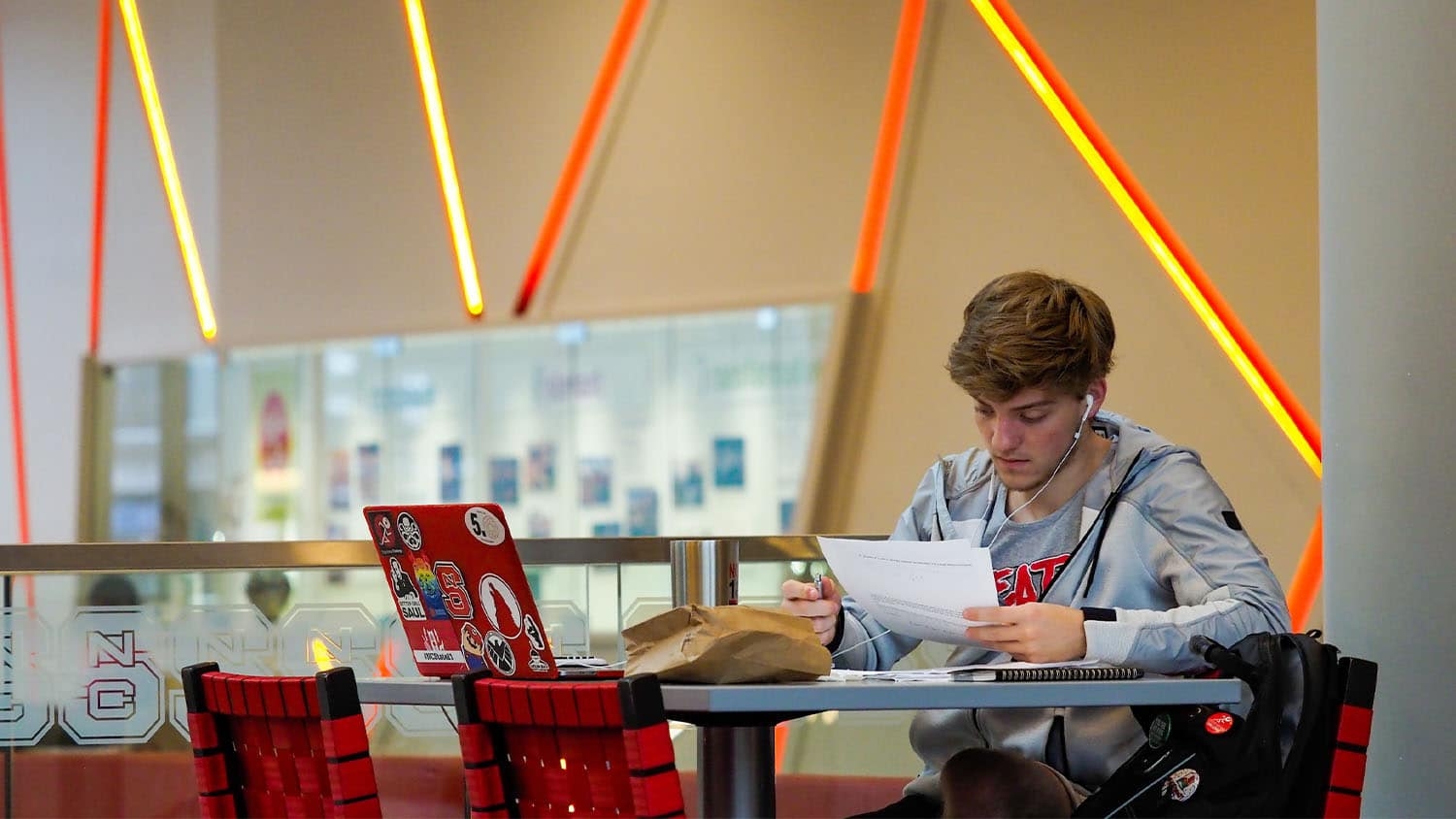Flexibility Adds Function to First-Year Writing Program

In instruction, technology is waxing as budgets are waning — especially in writing programs. Dr. Susan K Miller-Cochran, an associate professor and director in the first-year writing program at NC State, worked with doctoral candidate Dana Gierdowski to embrace technology, cut costs and craft a sustainable classroom model. Collaborating with the college IT group and the College of Design, Miller-Cochran and Gierdowski’s research produced a classroom model that not only balanced technology and budgetary constraint, but also added necessary flexibility to writing instruction.
The Department of English was faced with a challenge — to continue providing 225 sections of first-year writing while integrating and updating technology in the program. As the program existed, there were three major problems to combat. The cost of updating the computer classes outright was economically unfeasible. The heavily trafficked computer classrooms posed problems as teachers and students alike struggled with the rotation schedule. And finally, it became clear that a stationary setup with power cords galore was becoming obsolete. More and more students began to bring their own laptops to class, struggling to fit their own technology on the counter with the desktop computers, and crawling on the floor to plug in their own technology. They were also leaving university-owned computers unplugged, draining the batteries for later classes, and causing further complications.

The first phase of change was the addition of BYOT sections. BYOT, “bring your own technology” sections, were a step in the right direction, but not a solution. Miller-Cochran and Gierdowski continued their research, and in 2011, the first flexible classroom based on their research was implemented.
Now in its third semester of use, the flexible classroom in 126 Tompkins Hall — costing approximately $14,500 versus the $34,700 necessary for a traditional computer classroom — is preferred by instructors and students alike. The classroom boasts a mobile infrastructure where desks, tables, and whiteboards can all be arranged according to the section. The space takes student disabilities or limitations into consideration and allows the professor to move freely about the environment. While students are encouraged to bring their own technology to class, technology is also available for checkout. Students and instructors alike have found that the classroom creates a more engaging and functional atmosphere. Miller-Cochran says the classroom “bridge[s] the gap between in-class instruction and out-of-classroom assignments.”

Gierdowski has continued working with the first-year writing program at NC State to design a new flexible classroom to be implemented in the fall of 2013. Outside of the university, the success of 126 Tompkins Hall has led other universities such as Old Dominion and East Carolina University to design classrooms based on the work done by Miller-Cochran and Gierdowski. Their paper, “Making peace with the rising costs of writing technologies: Flexible classroom design as a sustainable solution,” was published in February’s Computers and Composition.
You can read more about Miller-Cochran and Gierdowski’s work on the university’s news site and in Technician.
By Alyssa Putt, CHASS Communication Intern


